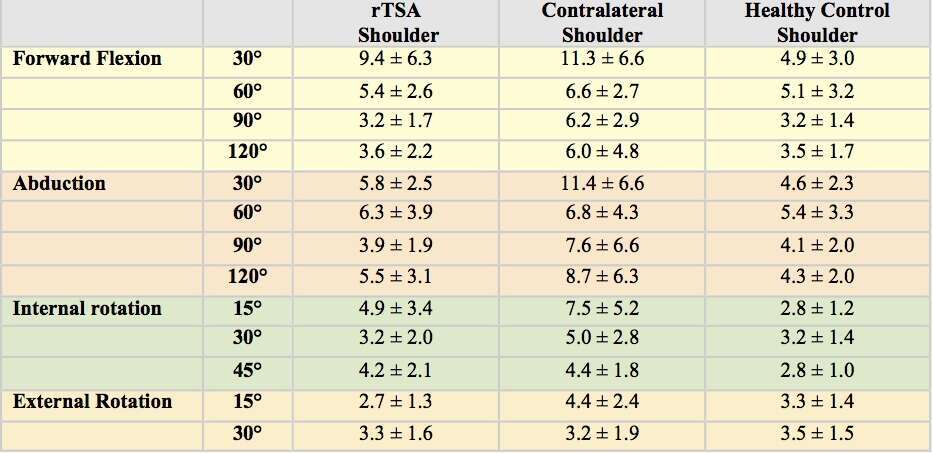
Reverse Total Shoulder Arthroplasty for Cuff Arthropathy Improves Shoulder Proproception
2Rehasport Clinic, Rehasport Clinic, Poznan
3Orthopaedic Department, Barzilai Medical Centre
Joint replacement affects the proprioception, as shown in knees, elbows and shoulder studies.
Aim: The aim was to evaluate shoulder proprioception following reverse total shoulder arthroplasty (rTSA) for patients with rotator cuff arthropathy.
Methods: 17 patients that underwent unilateral rTSA (9 Females, 8 Males) with average age of 86 years, and 31 healthy volunteers evaluated for joint position sense (JPS) of the shoulder using dedicated high accuracy electronic goniometer. Error of active reproduction of joint position (EARJP) was assessed at reference positions of 30°, 60°, 90°, 120° for forward flexion and abduction; 15°, 30°, 45° for internal and external rotation in the patients with rTSA, their contralateral nonoperated shoulder and control healthy shoulders.
Results: Results of Error of active reproduction of joint position (EARJP) for rTSA, contralateral shoulder and control shoulders at the different positions are as follows in the table:
The results showed significantly better joint position sense (JPS) of the shoulder (lower EPRJP) in shoulders following rTSA and normal control shoulders comparing to patient’s contralateral shoulder. Explanation for this finding can be that rTSA improves joint kinematics and stability, which allows better muscular performance and proprioception feedback.
Conclusion: Shoulders following rTSA show superior joint position sense (JPS) to nonopareted contralateral shoulders and comparable to healthy population shoulders. It seems that rTSA restores shoulder proprioception.
Powered by Eventact EMS